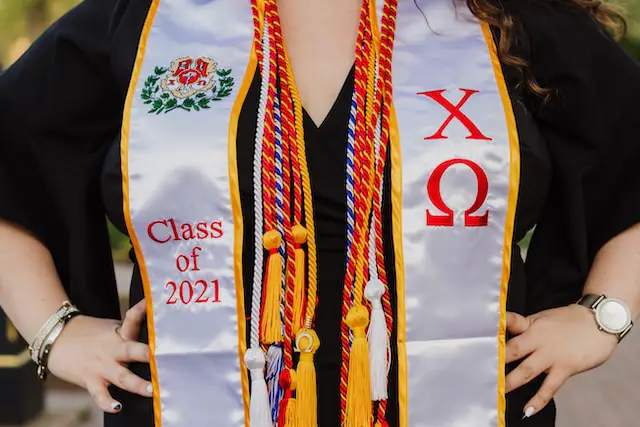Introduction
The Graduate Center, CUNY, is a highly respected institution of higher learning located in the heart of New York City. It is known for its exceptional graduate education programs and rigorous academic standards. However, The Graduate Center is also home to some fun and interesting facts that many people may not know. In this blog post, we will delve into some of the most fascinating and fun facts about The Graduate Center, CUNY.

The Graduate Center, CUNY, has a large and diverse student population
The Graduate Center, CUNY, is home to over 4,000 students, including a significant number of international students from around the world. The school’s student population is highly diverse, with individuals from a range of ethnic, cultural, and socioeconomic backgrounds.
The Graduate Center’s commitment to diversity and inclusion is reflected in its academic programs, research, and community engagement. The school offers a range of resources and services to support underrepresented students, including scholarships, mentoring programs, and cultural events.
In addition, The Graduate Center’s location in the heart of New York City provides its students with unique opportunities to engage in research and collaboration with other scholars and professionals from diverse backgrounds and fields of study.
The Graduate Center, CUNY, is home to a world-class research library
The Graduate Center, CUNY, is home to the Mina Rees Library, one of the largest academic research libraries in the United States. The library has over 1.5 million volumes, including rare and unique materials, as well as a range of electronic resources.
The Mina Rees Library is a vital resource for The Graduate Center’s academic programs and research activities. The library offers a range of services and resources, including reference services, interlibrary loan, and access to a range of databases and electronic resources.
In addition to the Mina Rees Library, The Graduate Center, CUNY, is home to a number of specialized research centers and institutes. These include the Center for the Humanities, the Advanced Science Research Center, and the Institute for Research on the African Diaspora in the Americas and the Caribbean.
The Graduate Center, CUNY, offers unique interdisciplinary programs
The Graduate Center, CUNY, offers a range of unique interdisciplinary programs that allow students to explore the intersection of different fields of study. One such program is the Ph.D. in Critical Social Personality Psychology, which combines social and personality psychology with critical theory.
Another interdisciplinary program is the M.A. in Liberal Studies, which offers students the opportunity to design their own course of study, drawing from a range of disciplines, including literature, history, philosophy, and art.
The Graduate Center, CUNY, also offers the Ph.D. in Urban Education, which focuses on the social, cultural, and political aspects of education in urban contexts. This program draws on a range of disciplines, including sociology, anthropology, history, and psychology.
The Graduate Center, CUNY, has a rich history
The Graduate Center, CUNY, has a rich history that dates back to 1961 when it was founded as the graduate school of the City University of New York. The school’s founding president was Dr. Harold W. Stoke, who was committed to providing high-quality graduate education to students from all backgrounds.
Over the years, The Graduate Center, CUNY, has continued to evolve and expand its programs, faculty, and facilities. In 2003, the school opened the Advanced Science Research Center, a state-of-the-art research facility that provides cutting-edge research in a range of fields, including nanoscience, photonics, and neuroscience.
The Graduate Center, CUNY, has a unique architectural design.
The Graduate Center, CUNY, is housed in a building that was designed by renowned architect, César Pelli. The building features a modern and sleek design that is meant to reflect The Graduate Center’s commitment to innovation and intellectual rigor.
The building’s most distinctive feature is its stunning 34-story glass tower, which provides panoramic views of New York City. The tower also serves as a symbol of The Graduate Center’s position as a leader in higher education and research.
The building’s interior is equally impressive, with a range of modern and technologically advanced classrooms, research facilities, and public spaces. The building also features a stunning atrium, which is used for a range of events and activities throughout the year.
The Graduate Center, CUNY, has a strong commitment to public engagement
The Graduate Center, CUNY, is committed to using its research and academic programs to address the most pressing issues facing society today. The school has a range of public engagement programs and initiatives that allow faculty and students to work directly with community organizations, policymakers, and other stakeholders.
One such program is the Public Science Project, which works to promote social justice and equity through research and community engagement. The program has partnered with a range of community organizations, including immigrant rights groups, labor unions, and youth organizations, to develop research projects that address pressing social issues.
The Graduate Center, CUNY, also has a range of public lecture series, conferences, and cultural events that are open to the public. These events bring together scholars, artists, and activists from a range of disciplines and backgrounds to explore pressing social and cultural issues.
Conclusion
The Graduate Center, CUNY, is a truly special institution that is known for its academic excellence, research, and commitment to social justice and community engagement. From its world-class research library and unique interdisciplinary programs to its stunning architectural design and public engagement initiatives, The Graduate Center is a leader in higher education and a vital part of the New York City community.
